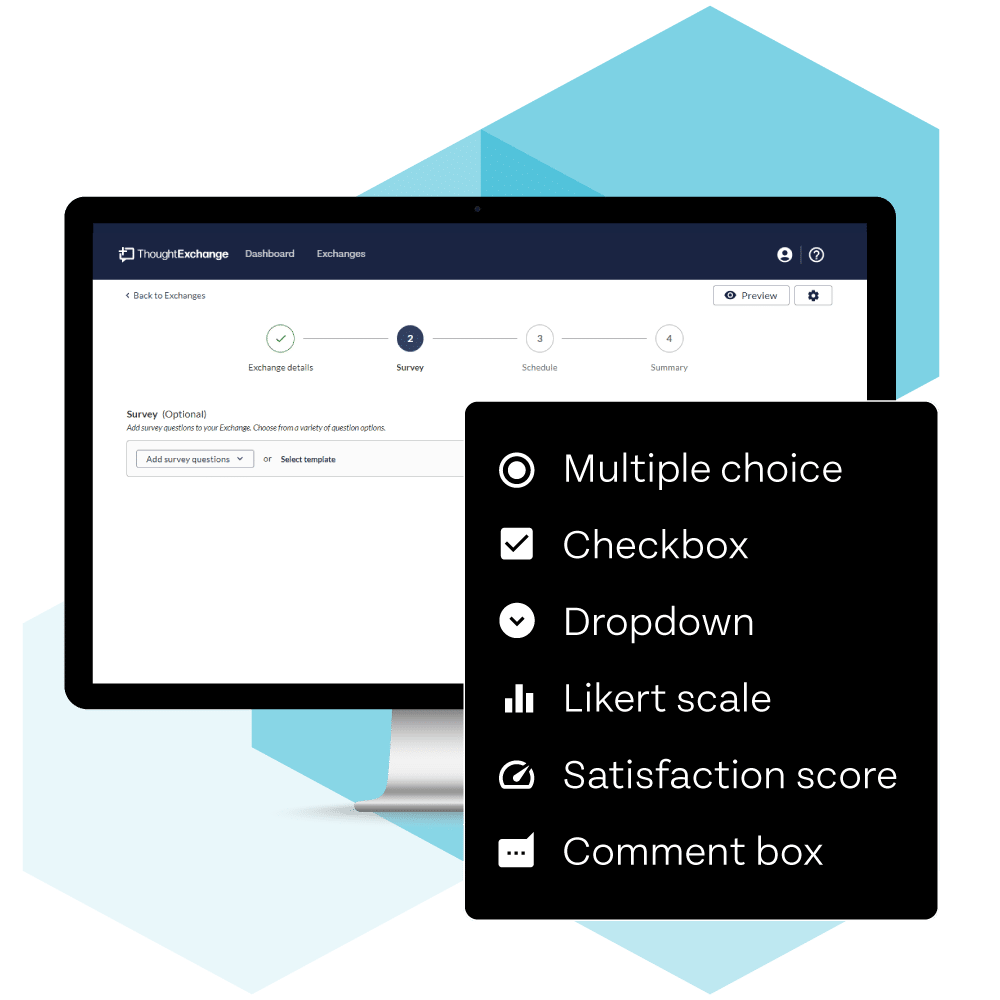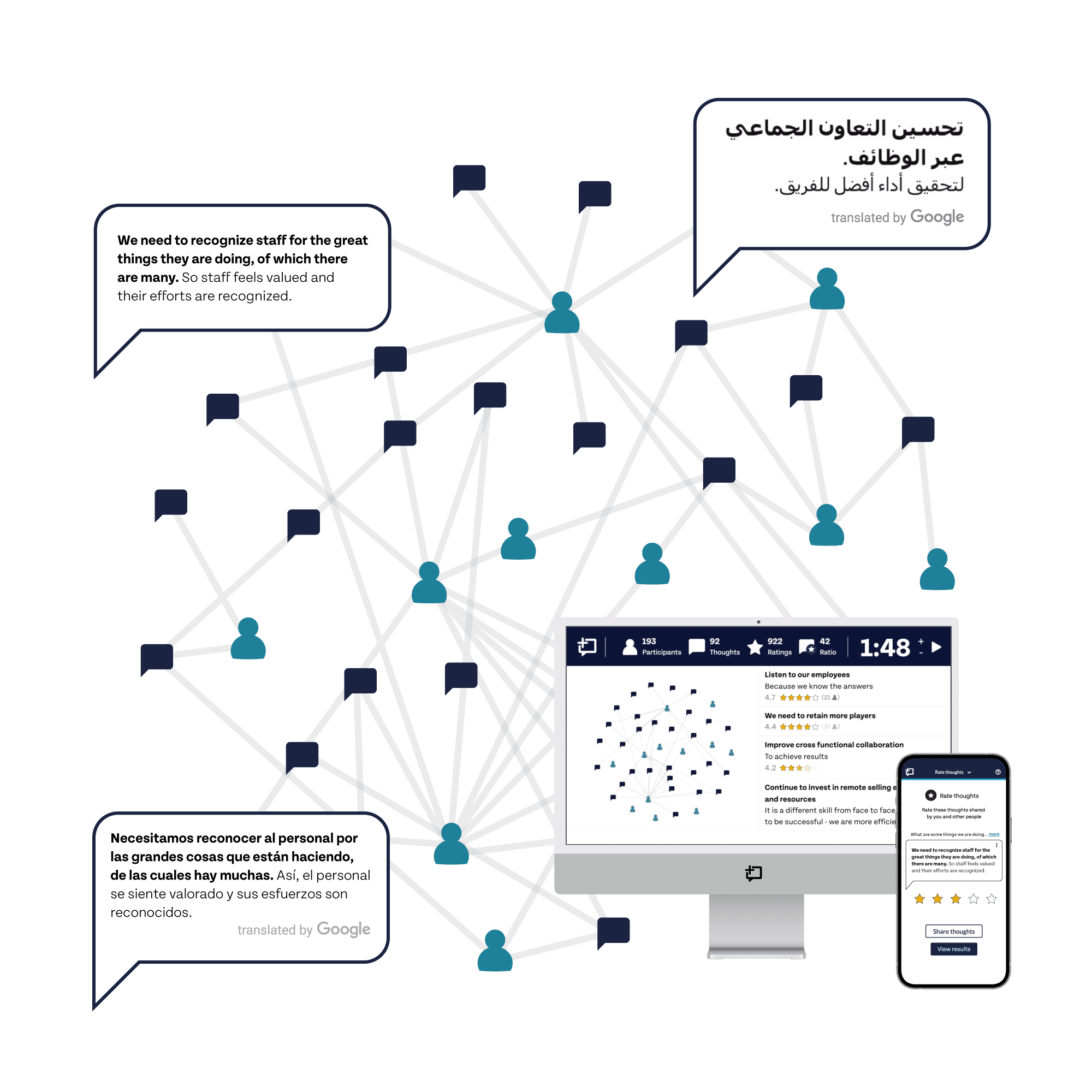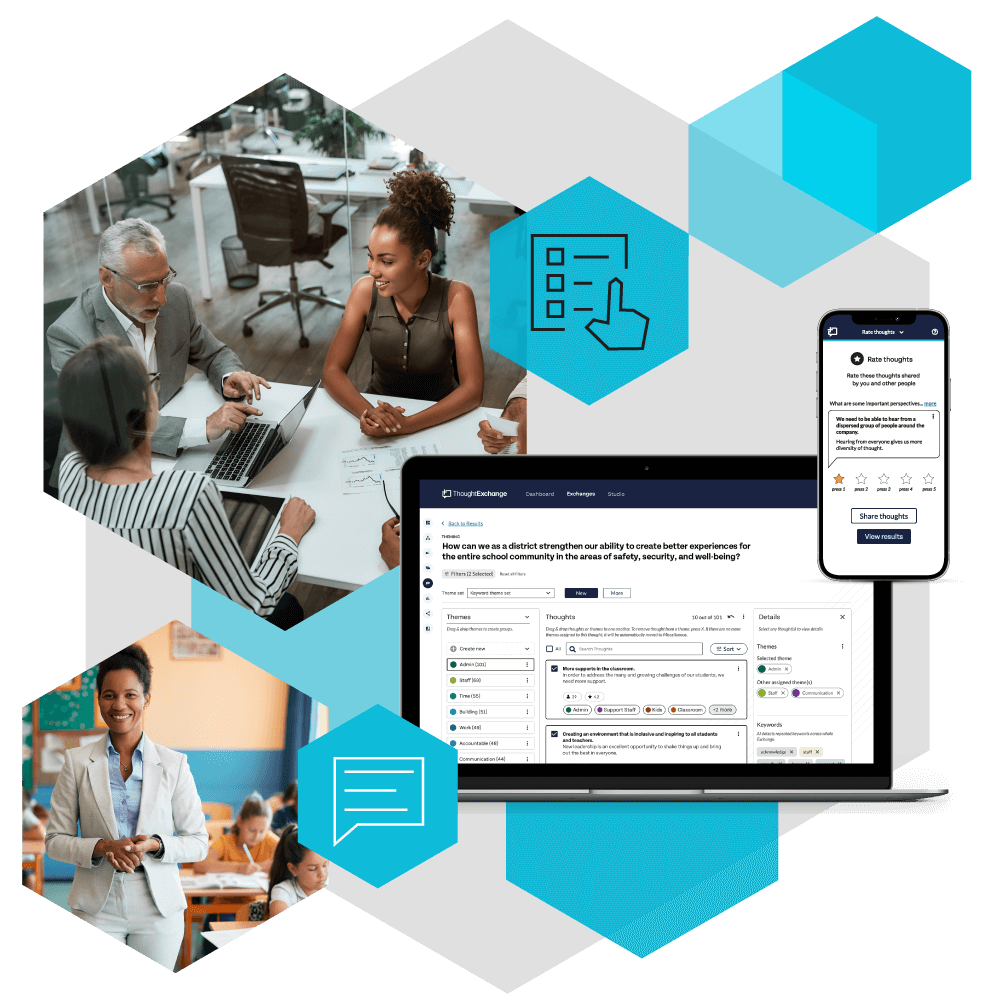Find out how.








Getting the Data You Need: When to Use a Survey, Exchange, or Both
Leaders make dozens of decisions a day. While some have minor consequences, others profoundly impact the entire organization. Whether you’re developing effective strategic plans or navigating uncharted change, your decisions matter. So how do you ensure you’re making the right ones, quickly and transparently? Just ask.
A comprehensive platform will help you to tap into your community’s collective intelligence to get the insights you need. With both classic survey and Exchange technology at your fingertips, ThoughtExchange has it all in one place. (Because we know you have enough decisions to make).
Wondering when to use a survey, an Exchange, or both? Consider your project goals, your target audience, and your research resources. How you gather insights depends on them. Read on for details.
See ThoughtExchange in Action — Explore the Product Tour
In this Article
What’s the difference between a survey and an Exchange?
Surveys for quantitative data
Surveys are typically structured, with closed-ended questions, offering predefined response options. Efficient and easy to administer to many people, users can statistically analyze the data to identify trends, patterns, and correlations.
Surveys are optimal for gathering fast, quantitative data and measuring a large group of people’s specific attitudes, behaviors, or opinions.

Exchanges for qualitative data

When to run a survey, Exchange, or both
Before choosing which method you’ll use to gather insights from your group, carefully consider your goals, the target audience’s characteristics, and the resources available to conduct the research.
What outcomes do you hope to achieve? Do you want to gather demographic data about a group of people or establish trust and generate ideas to solve a complex problem? In some cases, you’ll want to run a classic survey; in others, an Exchange makes more sense. Or use them together as complementary data-gathering methods.
For large, complex conversations with high stakes, you need excellent survey questions for understanding populations and perspectives and well-thought-out Exchanges for learning, common ground, and understanding nuance.
When to run a survey
Use a survey to gather quantitative data quickly and easily and measure a large group of people’s specific attitudes, behaviors, or opinions.
- To do a pulse check on community sentiment about an initiative.
- To measure product or service satisfaction using a Likert scale.
- To gather product or service feedback using multiple-choice or yes/no questions.
- To assess a training program or educational intervention’s effectiveness.
When to run an Exchange
Use an Exchange to gather qualitative feedback and prioritize people’s ideas and opinions.
- To build community trust and establish buy-in for change.
- To generate ideas and prioritize solutions for a complex problem. (e.g., getting input on a bond, addressing a community issue, etc.)
- To gather feedback on a broad topic or concept without predefined responses. (e.g., “What are your thoughts on our strategic priorities?”)
- To facilitate a brainstorming session and allow participants to build on one another's ideas and perspectives.
- To gather feedback from diverse community members and prioritize the most important ideas based on collective input.
When to run both a survey and an Exchange
If you want to dig deeper into an issue and understand why participants answered the way they did, use both—run a survey first, then follow up with an Exchange.
For example:
An education leader runs a survey to do a pulse check on community sentiment about student learning. They run a follow-up Exchange to dig deeper and understand why participants answered a certain way.
How satisfied were you with student learning this year?
- Very satisfied
- satisfied
- neutral
- dissatisfied
- very dissatisfied
What are your thoughts on student learning this year?
To sum up, if you want to gather numerical data and measure specific attitudes, behaviors, or opinions, use a survey. But if you want to gather qualitative feedback and prioritize ideas and opinions, use an Exchange. Consider using both together to gain a deeper understanding of your audience.
In addition to the examples above, there are many other situations where a survey or an Exchange might be the more appropriate approach. Ultimately, choosing between the two methods will depend on your research goals, target audience characteristics, and available research resources.
Get the data you need with ThoughtExchange
Whether you’re perfecting your organization's strategy, working to improve performance, or building an inclusive culture, ThoughtExchange has the capabilities to get you the information you need to succeed. From classic surveys to Exchanges, you’ll get the whole story with one innovative, intuitive platform!
Understand all the angles in real-time, get an accurate, unbiased picture of what your community needs and supports, and involve your people in the decisions that impact them most, with ThoughtExchange.

“I constantly sing the praises of ThoughtExchange to my colleagues. You truly don't know the benefits until you jump in. Once you experience how it reduces your processes, timing, and workload—you'll never go back. It's never a question of, do we continue ThoughtExchange next year? It's how are we going to use it differently, and how can we innovate from there?”
Michael Gomez, Ed.D. - District Coordinator of Assessment, Accountability, and New Teacher Induction for Saddleback Valley USD



